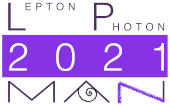Speaker
Description
The ATLAS experiment at the LHC can record about 3 kHz of physics collisions, out of an LHC design bunch crossing rate of 40 MHz. A two-level trigger system is used to achieve a high selection efficiency for rare physics events while reducing the significant background rate. The event selection is based on physics signatures, such as the presence of energetic leptons, photons, jets or missing energy. The trigger system also exploits algorithms using topological information and multivariate methods to cover the broad physics program pursued by ATLAS.
We will give an overview of the Run-2 trigger menu and its performance as well as an outlook to the upcoming ATLAS data-taking period in Run, 3 from 2022 onwards. We will present the design principles of the new trigger software within the multithreaded framework AthenaMT together with a summary of the expected performance improvements due to the Phase-1 Level-1 system upgrades and more sophisticated reconstruction techniques.
